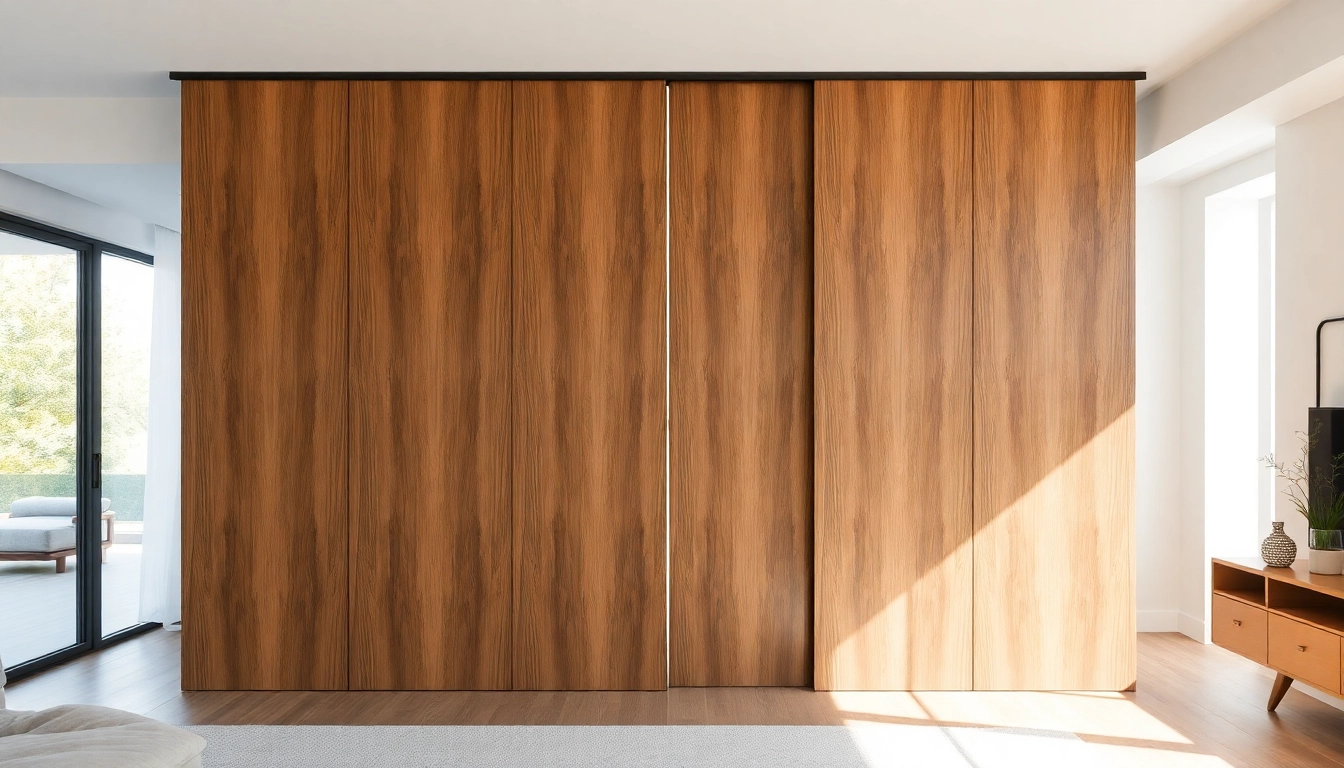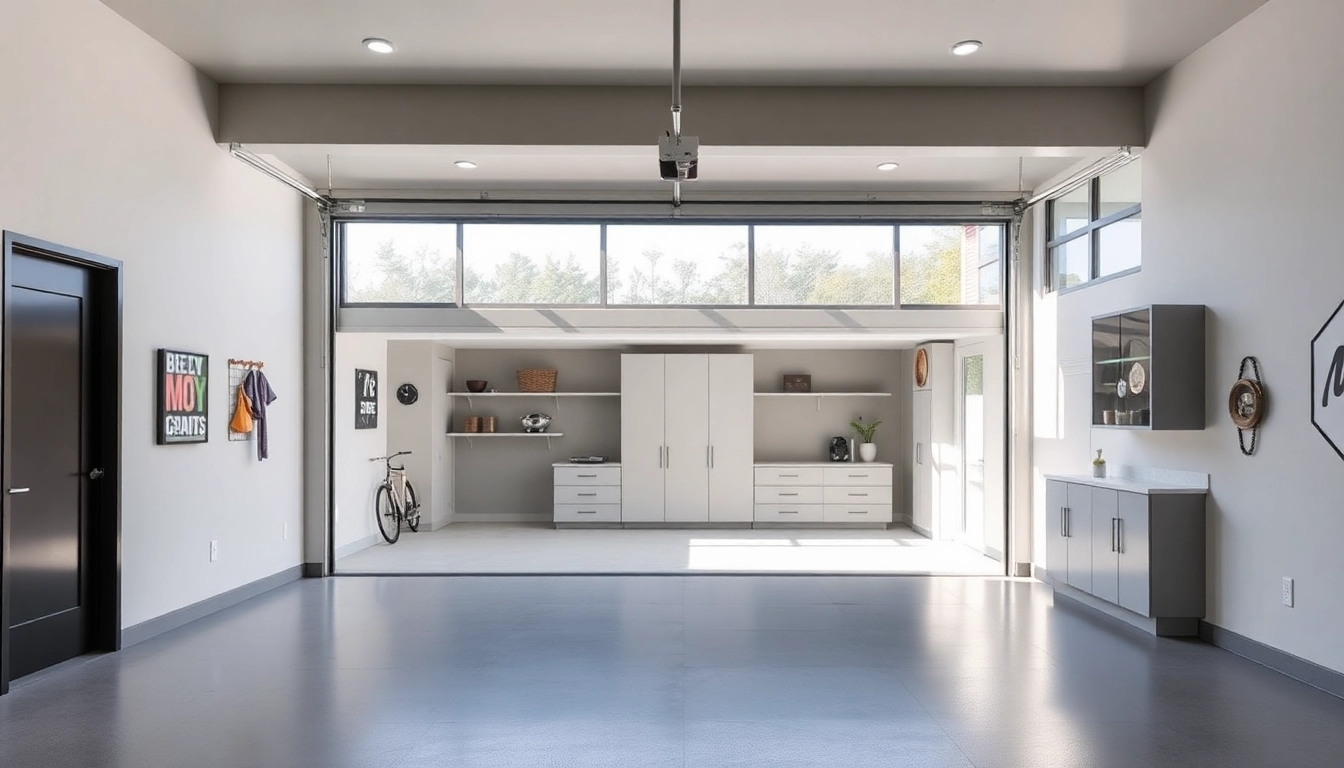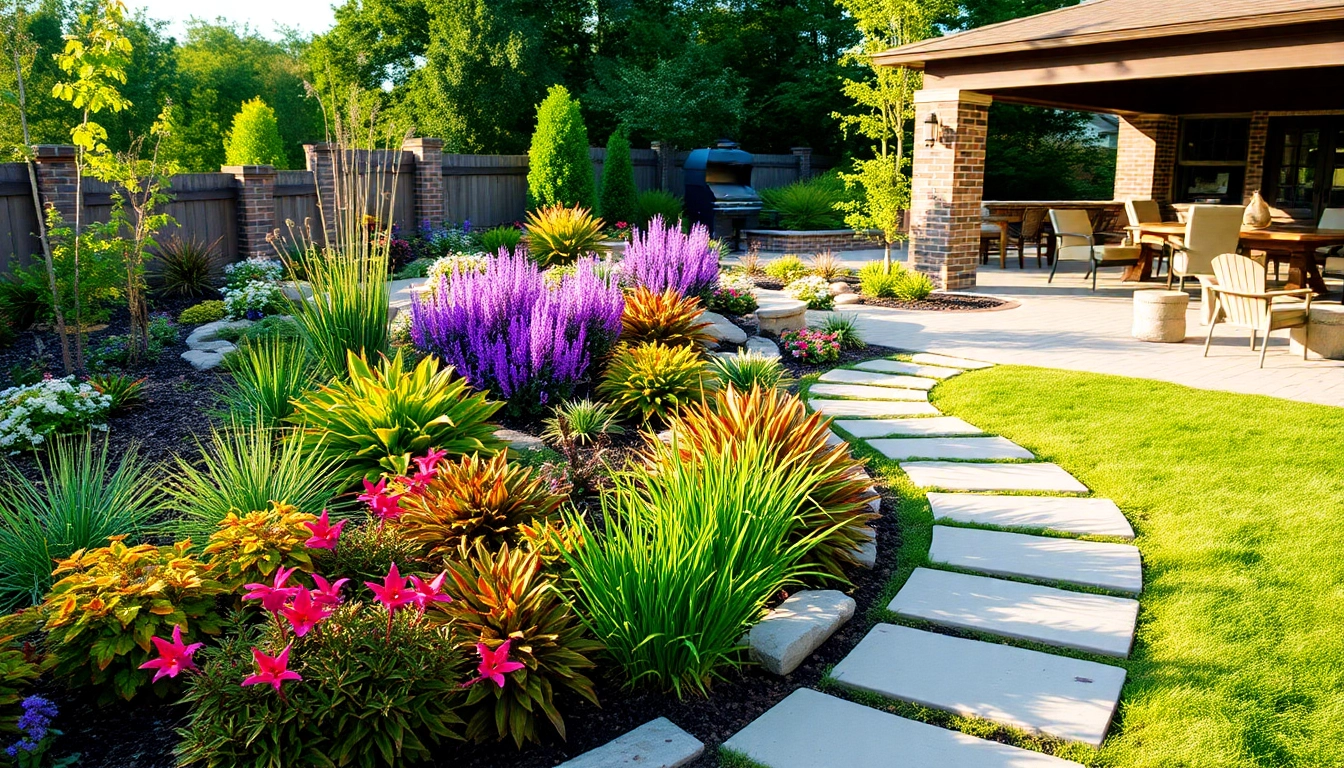Understanding Sliding Partition Walls
A sliding partition wall is a versatile interior design feature that can dramatically enhance the functionality of a space. Defined as movable panels that can be slid open or closed to divide areas, these walls are increasingly popular in both residential and commercial settings. They enable flexible configurations, allowing users to adapt their environment based on the needs of the moment, be it for privacy, acoustics, or aesthetic appeal. For an interesting exploration of this innovative solution, visit a detailed resource on sliding partition walls.
What is a Sliding Partition Wall?
Sliding partition walls are non-weight bearing structures that can swiftly and silently open up or close off areas within an existing room. If you envision a large space that can effortlessly morph from a wide-open area for gatherings into two intimate spaces for small meetings or family activities, then a sliding partition may be the solution you seek. These walls not only optimize room usage but also provide a melting pot of design possibilities, crafted from an array of materials consisting of wood, glass, or fabric.
Benefits of Sliding Partition Walls
The advantages of incorporating sliding partition walls into your home or office space are manifold:
- Flexibility: They allow for easily adjustable room layouts, facilitating various activities without the need for permanent structural changes.
- Space Efficiency: Ideal for smaller spaces, they help maximize available room without compromising on style or functionality.
- Aesthetic Appeal: Available in numerous styles, designs, and colors, they can enhance the visual interest of any room.
- Privacy: They can provide acoustic separation when needed, helping to create tranquil zones in bustling environments.
- Cost-Effectiveness: Often more affordable than traditional room builds, they can also eliminate the mess and stress of renovations.
Common Materials Used
Sliding partition walls come in various materials, each offering unique characteristics:
- Wood: Provides a warm, traditional look that can be stained or painted to match existing decor.
- Glass: Offers a modern aesthetic, allowing natural light to flow between spaces while maintaining privacy.
- Fabric: Adds a soft texture and can come in various colors and patterns, suitable for multifunctional spaces.
Types of Sliding Partition Walls
Wooden Sliding Partition Walls
Wooden sliding partition walls are among the most traditional forms of room dividers. They embody strength and durability while providing an inviting ambience that complements virtually any decor style, from rustic to contemporary. The panels are typically crafted from solid wood or engineered wood products, allowing for a rich palette of finishes and styles.
These walls can be designed as single or double-sided, providing options depending on your desired functionality. Moreover, wooden partitions can be fitted with sound insulation properties, making them excellent for shared spaces requiring peace and quiet.
Glass Sliding Partition Walls
For those who prefer a sleek and modern aesthetic, glass sliding partition walls are the way to go. They can be clear, frosted, or tinted, enabling you to customize levels of privacy while still allowing light to permeate spaces. Glass panels are particularly advantageous in commercial settings where visibility and openness are key.
Beyond mere aesthetics, some glass solutions come standard with energy-efficient properties, insulating against heat loss and retaining energy. This can be a wonderful addition in office designs focused on sustainability.
Fabric Sliding Panels
Fabric sliding panels offer a unique softness and versatility, ideal for environments requiring flexible usage without sacrificing warmth and coziness. Often used in home theaters or family entertainment spaces, these partitions can be tailored in terms of texture, color, and pattern, making them easy to adapt to changing design trends or personal tastes.
These walls can frequently be backed with various insulation materials to enhance sound absorption, creating a peaceful atmosphere in busy households or workplaces.
Choosing the Right Sliding Partition Wall for Your Space
Assessing Your Room Size and Layout
The first step in selecting the perfect sliding partition wall involves assessing the dimensions and layout of your space. Considerations include:
- Room Height: Ensure your chosen partition wall can operate effectively without hindering overhead fixtures.
- Width and Footprint: Analyze how much floor space the wall will occupy when opened. Solutions like pocket doors can recess into the wall for greater efficiency.
Considering Aesthetic Preferences
Your personal style and the desired ambience of the space should heavily influence your choice of sliding partitions. Options abound, ranging from rustic wooden panels that add warmth to sleek glass structures that create a contemporary feel. Mixing materials is also increasingly popular; combining glass and metal, for instance, can make a striking statement while ensuring functionality.
Budgeting for Your Project
Like any home improvement endeavor, establishing a realistic budget is key. The costs of sliding partition walls can vary considerably based on material, size, and customization. Wooden walls tend to be more budget-friendly compared to glass partitions, which may require high-quality materials and specialized installation. However, investing in quality can offset costs by providing longevity and minimizing maintenance needs.
Installation and Maintenance Tips
DIY Installation vs. Professional Help
While some sliding partition walls can be installed by handy homeowners, others may require the expertise of professionals. When determining your approach, consider:
- Your skill level with tools and construction.
- The weight and complexity of the partition wall design.
- Your available time and willingness to manage potential complications.
Professional installation may provide peace of mind and ensure proper functionality and longevity, especially for heavier materials like glass.
Regular Maintenance for Longevity
To keep sliding partition walls in top shape, familiarize yourself with basic maintenance:
- Regularly check the tracks and rollers for debris and clean as necessary.
- Lubricate moving parts to ensure effortless sliding action.
- Inspect for any signs of damage or wear, especially in areas where panels meet or hinge.
Common Issues and Solutions
Some common challenges faced with sliding partition walls include:
- Jamming or Sticking: If the panels aren’t sliding smoothly, debris in the track could be the culprit. Regular cleaning and lubrication can often remedy the situation.
- Misalignment: If the panels appear uneven, adjust the brackets or consult your installation guide for necessary adjustments.
Innovative Uses for Sliding Partition Walls
Creating Flexible Living Spaces
One primary application of sliding partition walls is in residential living areas, where adaptability is key. They allow homeowners to effortlessly alter the flow of a home, creating open spaces for entertaining or intimate settings for family gatherings. Innovative room designs may include studio apartments where a sliding wall can separate the bedroom from the living area, effectively maximizing the functionality of limited space.
Office Space Optimization
In corporate settings, the use of sliding partition walls can redefine how office spaces are utilized. With the rise of remote work and dynamic team layouts, having flexible office environments is vital. Sliding partitions permit companies to reconfigure spaces for team collaboration or create designated cubicles without rebuilding walls, allowing for efficient use of resources.
Transforming Home Theaters and Game Rooms
Entertainment spaces frequently benefit from the inclusion of sliding partition walls. For instance, parents can separate movie-watching areas from playrooms, allowing kids to enjoy their activities without disturbing movie nights. This also grants adults flexibility to transition spaces post-event, allowing for convenient transitions from game room to guest accommodations.



